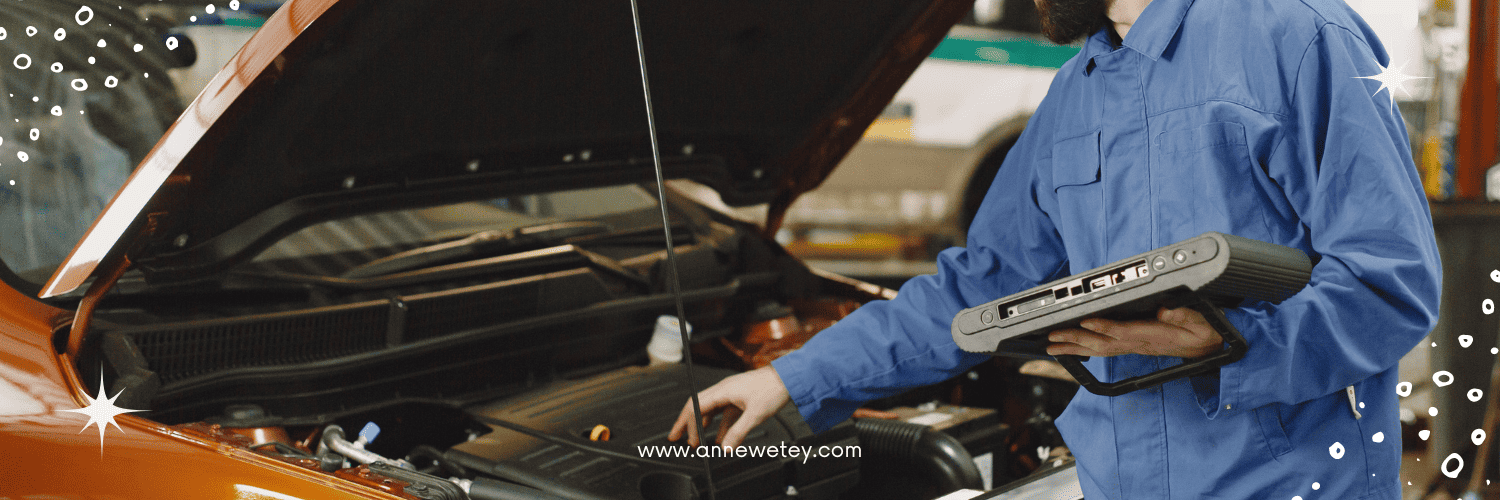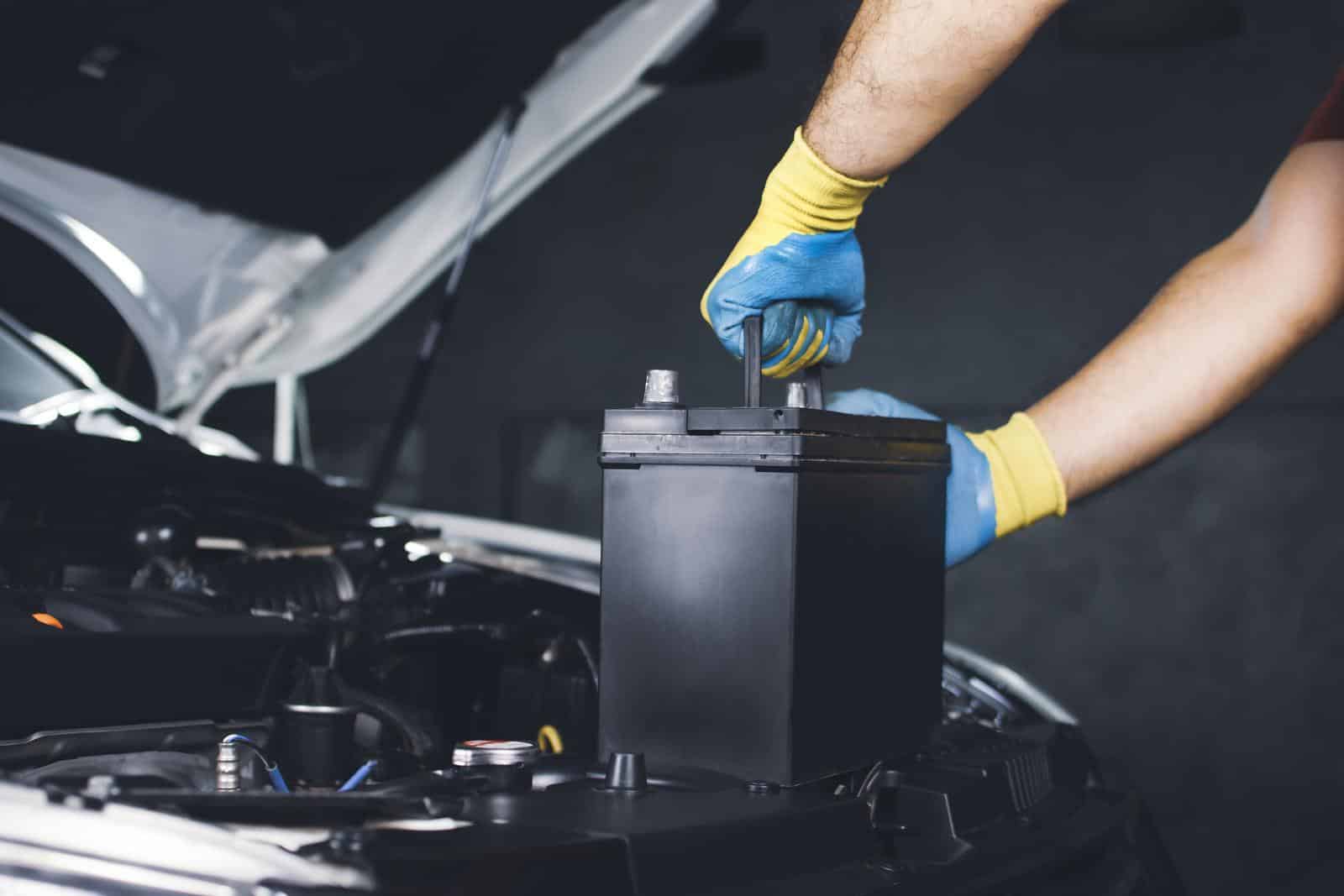The Best Way to Clean Car Battery Corrosion
Introduction
Most car batteries last between two and five years, but if you don’t maintain them properly, they can die much sooner. Cleaning car battery corrosion from your battery terminal is one of the most important maintenance tasks. Corrosion occurs when the battery terminals are exposed to oxygen and moisture, which causes a chemical reaction. The corrosion can build up and prevent the electrical current from flowing freely between the battery and the car. Check out our article on How Long Car Batteries Last?
Pay special attention to the positive terminals. Due to how electric current works, the positive clamps will usually show more signs of corrosion than the negative clamp.
There are a few different ways to clean corrosion off of car battery terminals. You can use a commercial battery terminal cleaner, or you can make your own cleaning solution with baking soda and water. You’ll also need a wire brush to scrub away the corrosion.
Jump straight to our Step-by-step guide on how to clean car battery corrosion safely.
What Is Battery Corrosion?

Is Battery Corrosion Dangerous?

In terms of personal safety, treat Battery Corrosion as essentially acid in powder form. It can get in your eyes and on your skin and burn you. Take the following steps to protect yourself from chemical burns.
- Wear long sleeves and pants when working with batteries.
- Also, wear safety goggles or glasses to protect your eyes.
- Gloves will help keep the chemical away from your hands.
After handling a car battery, wash your gloves off with water, then wash your hands with soap and warm water. If battery acid (Sulfuric acid) or corrosive powder gets on your skin, flush it with clean, lukewarm water and soap. If battery acid gets into your eyes, flush them for 30 minutes and then go to an ophthalmologist.
What Problems Does Car Battery Corrosion Cause?
Battery corrosion is bad for your battery and car. It can reduce your battery life and battery performance significantly. If you leave it untreated, it can easily destroy your battery terminals and can damage other sensitive electrical components in the engine bay.
Over time, corrosion can cause the terminals to become loose and fall off, leaving you stranded. Corrosion also causes the terminals to lose contact with the battery posts. The poor connection prevents the battery from providing enough current flow to start the engine.
If you see corrosion on your terminal posts or battery cables, the best thing to do is clean them immediately!
What Causes Battery Corrosion?
There are three main causes of battery corrosion:
- Vented Gases
- Overfilled battery
- Damage
- Overcharging
Vented Gases
All lead-acid batteries produce gases as a normal part of their operation. As the battery charges and discharges, the gases produced are vented out of the top and/or sides via vents in the cover. This is the most common cause of battery corrosion.
Today, car and battery manufacturers have reduced the quantity and effect of these corrosive and explosive gases by redesigning battery covers or attaching hoses to the battery in order to release the gases away from sensitive electrical components.
However, it is still essential that these gases escape the battery. Never block or seal the vents on a battery. This will cause a buildup of hydrogen gas and may cause an explosion.
Overfilling
Some Lead-acid batteries need to be topped up periodically. During routine battery maintenance, if you fill the battery too full, the electrolyte may leak out of the vent holes and cause corrosion of the battery terminals and other metal engine components. I have also experienced some new batteries, being overfilled by the battery manufacturer.
Damage
Cracking and damage to your battery will cause battery fluid to leak out. In a short time, this can cause expensive damage to your battery seat, electrical wiring and components, metal air-conditioning pipes, the chassis of your car, etc. Replace a leaking or damaged battery as quickly as possible. The havoc I have seen it cause in an engine compartment is just incredible.
Overcharging
Overcharging by a faulty alternator will cause the battery electrolyte to heat up, boil and steam out of the vent holes. Acidic gases will cause corrosion on all metal components, like battery terminals and cables around the battery.
How long will this take to clean?
Plan to spend about 10 minutes cleaning your batteries.
It may take more or less time depending on how deep the corrosion has gone and how often you clean your battery. Sometimes you might want to let it soak overnight before rinsing. In other cases, you may find that you really need to replace your battery terminals or cables.
What Supplies Do You Need to Clean Car Battery Corrosion?
If you choose to remove battery corrosion yourself, then you will need the following items:
- A stainless steel wire brush (there is also a special non-metal battery terminal cleaner brush for a more thorough cleaning)
- A battery cleaning solution (store bought or homemade)
- Clean water
- Paper towel or a clean rag/cloth
- Plier
- Protective Gloves
- Wrench
Most car batteries are still lead-acid and contain Sulphuric Acid take all safety precautions seriously.
What cleaning agent is best to clean battery corrosion?
Battery Terminal Cleaner
A battery terminal cleaner will help clean out any corrosion and neutralize battery acids. Battery cleaner might also help prevent future corrosion. If you’re worried about damaging your car’s finish, just make sure it doesn’t get anywhere near your paint job. Some terminal cleaners contain solvents that could leave a permanent stain.
Baking Soda Solution

Baking soda and water is a simple way to clean batteries. Baking soda is a mild alkali and will neutralize the acid in the corrosion. Mix 1 tablespoon of baking soda and 1 cup of warm water together (hot water is supposed to be more effective but then you risk getting scalded, so ignore that advice). Pour the mixture onto the corroded battery terminals. Let it sit for a few minutes before you try to clean it further with your wire brush or sandpaper. If you have excessive corrosion, you may need to repeat this process several times until the metal is clean and shiny again.
You can also try soaking the corroded area in the solution overnight. Then rinse thoroughly with water and dry completely.
Pro Tip: Baking Soda Solution in a spray bottle will allow you to get into those nooks and crannies quicker and easier.
Fizzy Drinks or Vinegar

Other common household items like a cola or other fizzy drinks contain citric acid, ascorbic acid, and phosphoric acid, which can help to loosen up the corrosion around your battery terminals. Household vinegar is also another gentle acid that can help get rid of battery corrosion. I can’t think of any good reason why you should buy fizzy drinks or perfectly good household vinegar specifically for this purpose, but it works, albeit less effectively than baking soda.
Step by Step Process for Cleaning Corrosion from your battery.
- Start by putting on gloves to keep your hands safe.
- If you have a modern vehicle, you may wish to connect a battery maintainer before removing the battery cables. This will help to maintain all your computer and radio memory settings while you are working.
- Disconnect the negative terminal first. This is best practice because it minimizes the risk of accidental grounding which may cause sparks, a fire or burns to your hands. It’s usually marked by a negative sign or the abbreviations NEG, or the negative cable may be black. If your terminals are very corroded, you may need to use a wire brush to loosen the corrosion before you can remove the cables. Be careful not to get the powder on your hand, face or mouth.
- Remove the positive terminal next. The positive cable is usually red cable. This will be marked by a plus sign. You may need to get the cables loose with pliers or a wrench.
- Check the cables carefully to see if there are any signs of damage or excessive wear. If the cables are damaged or fraying, you will need to replace them.
- Neutralize any corrosion on the terminals or in the cables by soaking in a cup of battery terminal cleaner, baking soda or other cleansing solution as detailed above.
- Scrub the battery terminals and battery poles carefully with a wire brush or sandpaper and rinse them well with water. Repeat until you have clean battery terminals.
- Finally, reconnect the battery. This time, fit the positive or red cable first before attaching the negative battery cable (black). Make sure you don’t over-tighten them.
How Can You Prevent Battery Corrosion?
Routine Maintenance
Batteries need to be maintained regularly to keep them working properly. If you check your battery periodically, you’ll notice any signs of corrosion sooner and be able to fix it before it leads to bigger issues.
If you see any signs of rust or corrosion, disconnect the battery cables first. Then clean the battery connections them thoroughly as detailed above.
Felt Battery Washers
Felt battery washers or anti-corrosion pads are easy to use and inexpensive. They should be applied to the battery posts underneath the terminals before installation. The red one goes underneath your positive battery terminal and the blue or green one goes underneath the negative battery terminal. There are two theories explaining how a battery terminal protector works:
- Some say that the anti corrosion rings have a chemical in them that neutralizes the gases vented from the battery.
- Other claim that these just provide a barrier at the bottom of the terminals to prevent the buildup of corrosion.
A little grease on them during installation will enhance their effectiveness and work to prevent water from getting inside.
Protective Coating

Use a protective battery grease or apply a light coat of petroleum jelly or silicon spray to the battery terminals. These products will help protect against corrosion. Remove the battery cable before applying. Silicone spray will last longer in a high temperature environment because it is silicone-base. Petroleum jelly will not hold up well in a hot engine because its base is paraffin wax. A rust inhibitor spray could also help protect your battery terminals.


 Previous Post
Previous Post Next Post
Next Post
